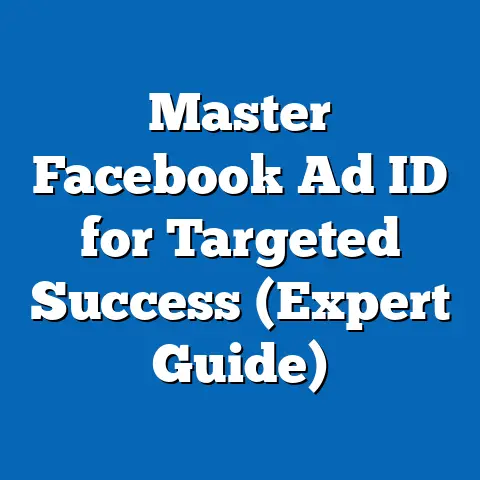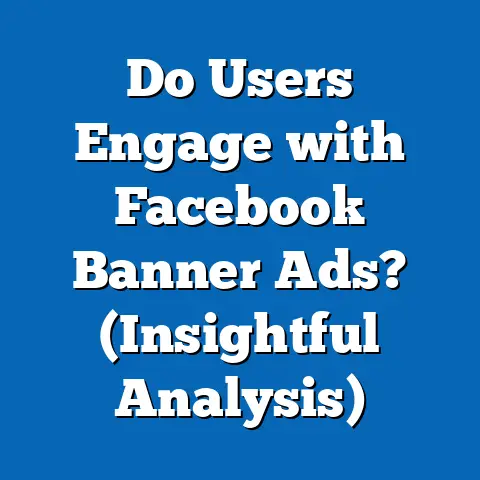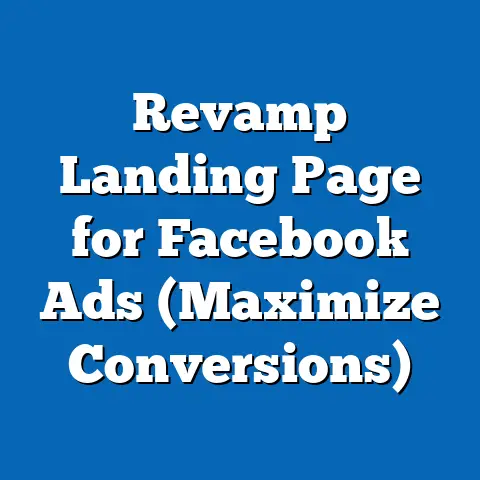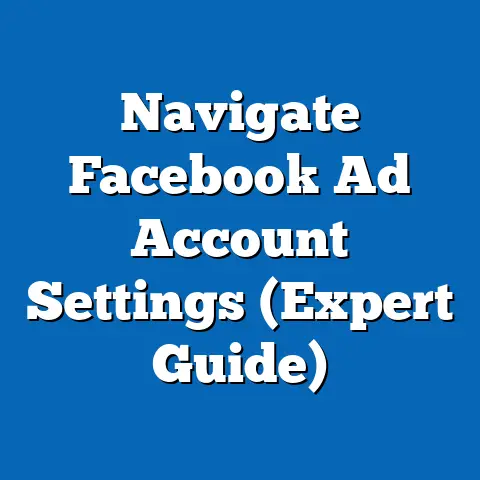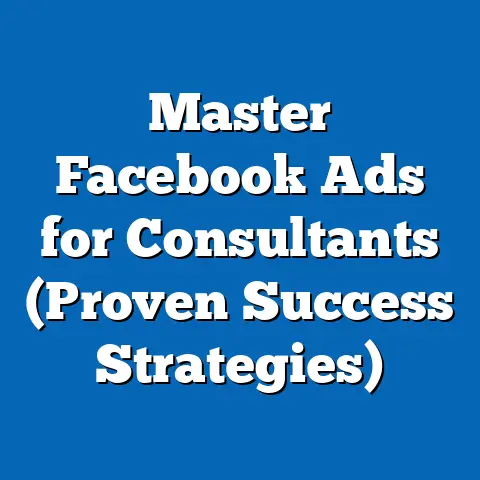Master Facebook Ads on YouTube (Proven Strategies Revealed)
In the ever-evolving landscape of digital marketing, achieving mastery over platforms like Facebook Ads represents a significant milestone for content creators and businesses alike. One notable achievement in this realm is the exponential growth of YouTube channels dedicated to teaching Facebook Ads strategies, with some creators amassing millions of views and subscribers by demystifying complex advertising techniques. This article explores the phenomenon of mastering Facebook Ads through YouTube content, focusing on proven strategies revealed by top creators, while delving into the defining characteristics of this digital education trend, its historical context, and its broader societal implications.
The rise of such content reflects a generational shift toward self-directed learning and entrepreneurial ambition, particularly among Millennials and Gen Z, who are often the primary audience for these tutorials. As digital platforms become integral to business success, understanding how to navigate tools like Facebook Ads is no longer optional but essential. This analysis will unpack the strategies that have propelled creators to success on YouTube, the historical backdrop of digital marketing education, and the cultural and economic impacts of this knowledge-sharing ecosystem.
Defining Characteristics of Facebook Ads Mastery on YouTube
The phenomenon of mastering Facebook Ads through YouTube content is characterized by several key traits that distinguish it from traditional marketing education. First, accessibility stands out as a defining feature; YouTube offers free, on-demand tutorials that break down complex ad strategies into digestible, actionable steps for beginners and seasoned marketers alike. Creators often use a mix of screen recordings, live demonstrations, and case studies to provide practical insights, making the learning process highly visual and engaging.
Another characteristic is the community-driven nature of this content. Viewers frequently interact with creators through comments, live Q&A sessions, and dedicated Facebook groups, fostering a collaborative environment where strategies are tested and refined in real-time. This democratization of knowledge contrasts sharply with the gatekeeping often seen in formal education or paid courses.
Finally, the content is often tailored to niche audiences, such as e-commerce entrepreneurs, small business owners, or affiliate marketers. This hyper-specific focus ensures relevance and applicability, catering to the unique needs of diverse learners. However, it’s important to note that not all content is created equal—while some creators provide rigorously tested strategies, others may promote unverified tactics, highlighting the need for critical evaluation among viewers.
Historical Context: The Evolution of Digital Marketing Education
To fully grasp the significance of mastering Facebook Ads on YouTube, it’s essential to consider the historical context of digital marketing education. The early 2000s marked the beginning of online advertising with platforms like Google AdWords, but it wasn’t until the launch of Facebook Ads in 2007 that social media advertising became a game-changer for businesses. Initially, learning to navigate these platforms was limited to industry insiders, expensive workshops, or trial-and-error methods, creating a steep learning curve for newcomers.
The rise of YouTube, launched in 2005, revolutionized how knowledge was disseminated. By the late 2000s and early 2010s, as social media marketing gained traction, early adopters began sharing tutorials on YouTube, capitalizing on the platform’s growing user base. This period coincided with the Great Recession (2007-2009), which spurred a wave of entrepreneurship as individuals sought alternative income streams, often turning to online businesses and, consequently, digital advertising.
By the mid-2010s, Facebook Ads had become a cornerstone of digital marketing, with businesses of all sizes leveraging the platform’s targeting capabilities to reach specific audiences. YouTube creators responded by producing in-depth content, often drawing from their own successes and failures. This era also saw the emergence of influencer marketing, further amplifying the demand for advertising know-how. Today, with over 2 billion monthly active users on YouTube as of 2023 (Statista), the platform has become a primary source of education for digital marketing, reflecting a broader cultural shift toward visual, self-paced learning.
Societal Implications: Empowerment and Economic Shifts
The proliferation of Facebook Ads tutorials on YouTube carries profound societal implications, particularly in the realms of economic empowerment and workforce dynamics. For many individuals, especially in underserved communities or regions with limited access to formal education, these free resources provide a pathway to entrepreneurship and financial independence. A 2022 study by the Pew Research Center found that 64% of young adults aged 18-29 have used YouTube to learn new skills, with digital marketing being a popular category.
This trend also reflects a generational shift in how knowledge is acquired and valued. Millennials (born 1981-1996) and Gen Z (born 1997-2012), who grew up with the internet and social media, are more likely to trust peer-to-peer learning over traditional institutions. Their preference for authenticity and relatability often draws them to YouTube creators who share personal stories of success, such as turning a small budget into significant revenue through targeted Facebook Ads.
Economically, the impact is twofold. On one hand, the accessibility of these tutorials has lowered the barrier to entry for small businesses and solopreneurs, fostering innovation and competition in the digital marketplace. On the other hand, the saturation of advertising knowledge has led to increased competition for ad space on platforms like Facebook, driving up costs and requiring ever-more sophisticated strategies to stand out—a challenge that creators often address in their content.
Culturally, this phenomenon underscores a growing emphasis on self-reliance and hustle culture, particularly among younger generations. While this can inspire ambition, it also raises questions about work-life balance and the pressure to constantly upskill in a fast-paced digital economy. Additionally, the reliance on YouTube for education highlights disparities in digital literacy and access to technology, as not all individuals have the tools or skills to engage with this content effectively.
Proven Strategies for Mastering Facebook Ads on YouTube
Having established the context and significance of this trend, let’s explore the proven strategies revealed by top YouTube creators for mastering Facebook Ads. These strategies are derived from a synthesis of popular content from channels with high engagement and credibility, as well as insights from industry reports and case studies. While individual approaches vary, several core principles emerge consistently across successful tutorials.
1. Audience Targeting Precision
One of the most emphasized strategies is the importance of precise audience targeting. Creators often stress that the success of a Facebook Ad campaign hinges on understanding and segmenting the target audience using tools like Facebook’s Audience Insights. For instance, tutorials frequently demonstrate how to create custom audiences based on website traffic, email lists, or engagement with previous content, ensuring ads reach individuals most likely to convert.
Top creators also advocate for lookalike audiences, which allow advertisers to target users similar to their existing customers. A 2021 case study by Social Media Examiner highlighted that campaigns using lookalike audiences saw a 30% higher conversion rate compared to broader targeting methods. YouTube tutorials often walk viewers through the step-by-step process of setting up these audiences, making a complex feature accessible to novices.
However, creators caution against over-targeting, which can limit reach and increase costs. The balance between specificity and scale is a recurring theme, with many suggesting regular testing and refinement of audience parameters to optimize results.
2. Compelling Creative and Copywriting
Another cornerstone of successful Facebook Ads, as revealed on YouTube, is the creation of compelling visuals and copy. Tutorials often emphasize that ads must grab attention within the first three seconds, given the short attention spans of social media users. Creators recommend using high-quality images or videos with bold colors, clear branding, and relatable messaging to stand out in crowded newsfeeds.
Copywriting is equally critical, with many YouTubers advocating for a problem-solution framework—identifying a pain point and presenting the product or service as the answer. For example, a popular strategy is to use action-oriented language in headlines, such as “Boost Your Sales Today!” paired with concise descriptions that highlight benefits over features. A/B testing different creatives and copy variations is frequently advised to determine what resonates most with the audience.
Notably, some creators highlight the importance of aligning ad content with cultural trends or seasonal events to increase relevance. While this can be effective, it requires careful execution to avoid appearing opportunistic or insensitive, a nuance often discussed in community comments and feedback.
3. Budget Optimization and Scaling
Budget management is a critical focus in many YouTube tutorials, as Facebook Ads can quickly become costly without a clear strategy. Creators often start by recommending small test budgets—sometimes as low as $5 per day—to gauge the performance of different ad sets before scaling up. This approach minimizes risk while providing valuable data on what works.
Once a campaign shows promise, tutorials guide viewers on scaling strategies, such as increasing budgets gradually or duplicating successful ad sets to target new audiences. A popular technique is the “20% rule,” where budgets are increased by no more than 20% daily to avoid disrupting Facebook’s algorithm and triggering higher costs per click. According to a 2022 report by Hootsuite, campaigns that scaled methodically saw a 25% better return on ad spend compared to those that scaled aggressively.
Creators also stress the importance of monitoring key metrics like cost per acquisition (CPA) and return on ad spend (ROAS) to ensure profitability. Many provide templates or tools for tracking these metrics, further simplifying the process for beginners. However, it’s worth noting that not all tutorials address the risks of scaling too quickly, which can lead to diminishing returns—a gap that savvy viewers must navigate independently.
4. Leveraging Retargeting for Higher Conversions
Retargeting, or remarketing, is a strategy frequently highlighted in YouTube content for its effectiveness in re-engaging potential customers. Tutorials often explain how to use the Facebook Pixel—a piece of code installed on a website—to track user behavior and serve ads to individuals who have previously interacted with a brand but didn’t convert. For example, retargeting ads might target users who abandoned a shopping cart or visited a specific product page.
Creators note that retargeting campaigns typically have higher conversion rates because they focus on warm leads already familiar with the brand. A 2020 study by WordStream found that retargeted ads can increase conversion rates by up to 150% compared to initial campaigns. YouTube tutorials often include step-by-step guides on setting up the Pixel and creating dynamic ads that automatically display relevant products to users.
However, some creators warn of “ad fatigue,” where overexposure to retargeted ads can annoy users and harm brand perception. Strategies to mitigate this, such as setting frequency caps or varying ad creatives, are often discussed, though not universally emphasized across all channels.
5. Staying Updated with Algorithm Changes
Finally, a recurring theme in YouTube content is the need to stay abreast of Facebook’s frequent algorithm updates, which can dramatically impact ad performance. Creators often dedicate entire videos to dissecting updates, such as changes to iOS privacy settings in 2021 that limited tracking capabilities, or shifts in how ad relevance is calculated. These videos provide actionable tips, like focusing on broad targeting when detailed data is unavailable or diversifying ad spend across multiple platforms.
Many creators also encourage joining online communities or following official Facebook updates to stay informed. This adaptability is framed as a non-negotiable skill for long-term success, reflecting the fast-paced nature of digital marketing. However, the sheer volume of updates can overwhelm beginners, a challenge that some tutorials address by prioritizing foundational strategies over fleeting trends.
Comparative Analysis: Generational Engagement with Facebook Ads Content
The consumption and application of Facebook Ads tutorials on YouTube vary across generations, influenced by technological fluency, economic priorities, and cultural attitudes. Millennials, often in their prime earning and entrepreneurial years, are a key demographic for this content, driven by a desire to build side hustles or scale businesses. Their familiarity with social media and early adoption of platforms like YouTube make them adept at navigating and applying complex strategies.
Gen Z, on the other hand, brings a native digital mindset to the table, often viewing YouTube as a primary learning resource over traditional education. Their engagement is characterized by a preference for short-form, visually dynamic content, though many also consume longer tutorials for in-depth learning. A 2023 survey by Morning Consult found that 72% of Gen Z users have purchased a product or service after seeing it advertised on social media, underscoring their responsiveness to well-crafted Facebook Ads.
In contrast, Gen X (born 1965-1980) and Baby Boomers (born 1946-1964) engage less frequently with this content, often due to lower digital literacy or differing career priorities. However, those who do participate—often small business owners or late-career entrepreneurs—bring a pragmatic approach, focusing on cost-effective strategies over experimental tactics. This generational diversity highlights the need for creators to tailor content to varying levels of expertise and learning styles, a nuance that successful channels often address through tiered tutorials or beginner-to-advanced playlists.
Technological, Economic, and Cultural Influences
Several external factors shape the landscape of mastering Facebook Ads on YouTube, spanning technological, economic, and cultural dimensions. Technologically, the integration of AI and machine learning into Facebook’s ad platform has simplified certain aspects of campaign management, such as automated bidding and ad placement. YouTube creators often highlight these tools as game-changers for efficiency, though they also caution against over-reliance, as human oversight remains critical for nuanced targeting.
Economically, the growth of e-commerce—accelerated by the COVID-19 pandemic—has fueled demand for digital advertising skills. A 2022 report by eMarketer estimated that global e-commerce sales reached $5.5 trillion, with a significant portion driven by social media ads. This economic shift has positioned Facebook Ads as a vital tool for businesses, in turn driving viewership of YouTube tutorials as individuals seek to capitalize on online opportunities.
Culturally, the rise of creator economies and gig work has normalized the pursuit of digital skills as a means of self-employment. YouTube’s role as a knowledge hub aligns with broader trends toward decentralization and peer-to-peer learning, challenging traditional gatekeepers of expertise. However, this also raises concerns about misinformation, as not all creators are equally qualified to teach complex topics like advertising—a tension that viewers must navigate.
Nuances and Diversity Within the Audience
While generational trends provide a useful framework, it’s crucial to acknowledge the diversity within the audience for Facebook Ads content on YouTube. Not all Millennials or Gen Z users are tech-savvy entrepreneurs; many are casual learners or hobbyists experimenting with ads for personal projects. Similarly, cultural and socioeconomic factors influence access to and engagement with this content, with rural or low-income individuals facing barriers like limited internet access or outdated devices.
Moreover, learning preferences vary widely. Some viewers prefer detailed, hour-long tutorials, while others gravitate toward quick “hacks” or summaries. Successful creators often cater to this diversity by offering a range of content formats and maintaining active engagement with their audience to address specific needs. This adaptability underscores the importance of personalized education in the digital age, though it also highlights the risk of information overload for viewers navigating a crowded content landscape.
Implications for Society, Culture, and the Workplace
The widespread availability of Facebook Ads tutorials on YouTube has far-reaching implications across multiple domains. Societally, it contributes to a more informed and empowered populace, equipping individuals with skills to compete in a digital economy. However, it also exacerbates inequalities, as those without digital access or literacy are left behind, widening the digital divide.
Culturally, this trend reinforces the value of lifelong learning and adaptability, traits increasingly prized in a rapidly changing world. It also elevates the status of content creators as educators, blurring the line between entertainment and instruction. Yet, the pressure to constantly learn and optimize can contribute to burnout, particularly among younger generations already grappling with economic uncertainty.
In the workplace, proficiency in digital advertising is becoming a sought-after skill, even in non-marketing roles, as businesses prioritize online presence. Employees who master Facebook Ads through YouTube tutorials may gain a competitive edge, though employers must also invest in formal training to ensure consistent knowledge application. Additionally, the rise of remote and freelance work—often supported by skills learned on YouTube—challenges traditional notions of career progression, offering flexibility but also instability.
Conclusion: Forward-Looking Insights and Uncertainties
Mastering Facebook Ads through YouTube content represents a transformative shift in how digital marketing skills are acquired and applied, driven by accessibility, community engagement, and practical strategies. Proven tactics like precise targeting, compelling creatives, budget optimization, retargeting, and adaptability to algorithm changes have empowered countless individuals to succeed in the digital marketplace. Yet, this phenomenon is not without challenges, from the risk of misinformation to the digital divide that limits access for some.
Looking ahead, the landscape of digital marketing education on YouTube is likely to evolve with advancements in technology, such as AI-driven content creation and ad optimization tools. The growing integration of platforms—such as YouTube Shorts mimicking TikTok’s format—may also shift how tutorials are consumed, favoring bite-sized, high-impact content. However, uncertainties remain, including the sustainability of free education models as creators seek monetization and the potential for regulatory changes to impact ad platforms like Facebook.
Ultimately, the mastery of Facebook Ads on YouTube underscores a broader cultural shift toward self-directed learning and digital empowerment, with implications that will continue to shape society, culture, and the economy for years to come. As this space evolves, critical engagement with content and a commitment to inclusivity will be key to ensuring that the benefits of this knowledge-sharing ecosystem are realized by all.


